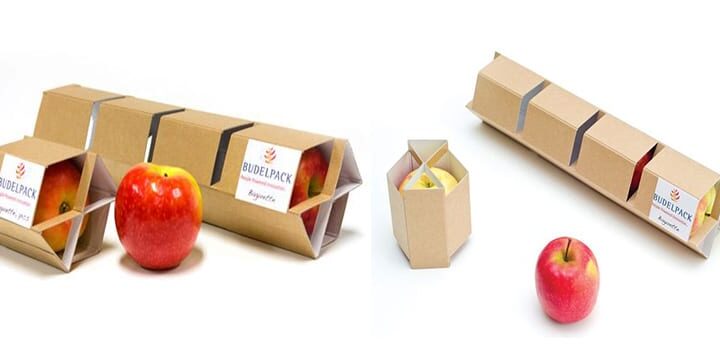Cardboard is winning over plastic or no-package as for packaging of fruits and vegetables
- With the existence of corrugated board, visits in fruit and vegetable department are longer and more exploratory than with plastic crates or even without packaging.
Recently, a neuro-scientific study on the analysis of consumer behavior in the fruit and vegetable sector has reviled the advantage of cardboard packaging in local markets. The study, conducted by Nego-Science in two stores and based on 2016 hours of observations, focuses on the impact of packaging on the customer experience in this department.
While 95% of customers surveyed feel that they do not notice the packaging used to present fruits and vegetables, the study shows that packaging has a strong impact on the customer experience.
- More time spent on fruits and vegetables with cardboard
First, the nature of the packaging affects the time spent in the shelf: a customer spends more time (between 17% and 50%) in front of the stalls when the fruits and vegetables are presented in corrugated trays rather than in plastic crates or without packaging (presentation directly on the shelves with stainless steel separators).
- More radius explored with corrugated cardboard packaging presentation
The study also shows that the coverage rate (quantification of space searched by the customer on the shelf) is higher when fruits and vegetables are presented in cardboard packages rather than in plastic cases (35.9%). coverage rate for cardboard versus 23.8% with plastic (51% more area).
- More interest for the product than for the price with a cardboard tray
Then, depending on the type of presentation, customers pay more or less attention to the product rather than the price displayed. And again, cardboard plays the winning role.
When faced with a presentation in cardboard and one without packaging, 81% of customers are interested in products rather than prices when fruits and vegetables are presented in corrugated trays versus 16% for stalls with stainless steel separators. Meanwhile, with a presentation cardboard and another plastic, the result goes up to 86% against 59% for plastic crates.
What’s more, there are more buyers of fruits and vegetables than with plastic or without packaging
Finally, the study shows that the number of customers buying fruits and vegetables increases between 13% and 16% when presented in corrugated trays rather than on stainless steel displays or in plastic crates.
In all, the conclusion suggests that cardboard packaging can, invisibly but considerably, earn favor from customers during the sale of fresh goods like fruit and vegetables. The reason for this phenomenon still needs further analysis, but you can just take advantage of this study and renew your good shelves from this moment.









I agree with you that paper packaging is the most suitable for sustainable development and the damage to the environment is minimal.